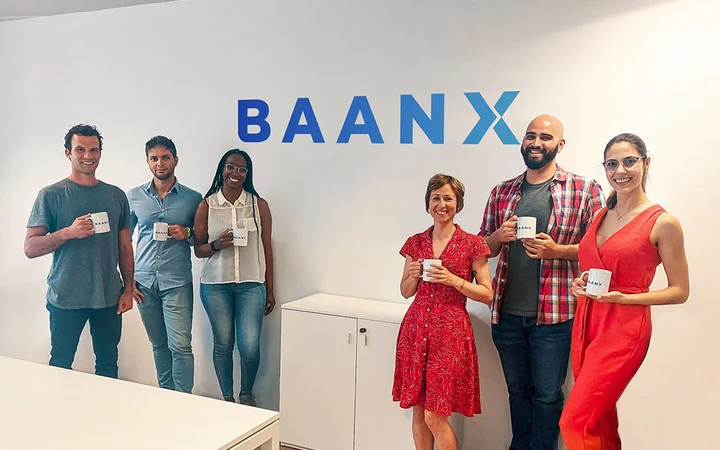Old road, new bridge Mind Network’s Zero Trust Bridge (ZTB)
Rejuvenating the Past Mind Network's Zero Trust Bridge (ZTB) Connects Old Roads to New BridgesSource: PermaDAO
Recently, Mind Network announced the launch of a groundbreaking cross-chain bridge called the Zero Trust Bridge, which connects traditional and cryptographic assets, binding Web2 and Web3 together, enabling the liquidity of any asset, and paving the way for a bridge of freedom that aligns with the next era.
The Zero Trust Bridge (ZTB) is a solution proposed to address the issue of cross-chain security in the Web3 multichain era. In the Web3 world, protecting user data security becomes particularly important, especially during cross-chain interactions and communications.
However, traditional cross-chain bridges have flaws in protecting user assets and data, making them susceptible to malicious attacks and causing financial losses. To solve this problem, Mind Network introduced the Zero Trust Bridge (ZTB), which connects traditional finance, central bank digital currencies (CBDCs), and blockchains, providing unprecedented security protection for asset transfers and data communications across different blockchains.
- What does the reversal of OpenAI’s power struggle reveal?
- Robots, terminals, and LLM – The encrypted user experience is gradually becoming inward.
- LianGuai Morning News | CZ unable to return to UAE before next year’s verdict, Google Cloud confirms participation in EigenLayer testnet
ZTB utilizes a zero trust security technology framework, combining advanced technologies such as zero-knowledge proofs and fully homomorphic encryption to ensure the security of cross-chain asset transfers and data exchanges. It can achieve connectivity and interoperability from bank chains to public chains, CBDC chains to public chains, and public chains to public chains, enhancing the security of these cross-chain interactions. The vision of ZTB is to bring trillions of dollars into the Web3 realm, creating unprecedented growth opportunities for individuals, institutions, and governments.
ZTB achieves its goals through three key components: zero trust data, zero trust transactions, and zero trust assets. Zero trust data protects sensitive user information, zero trust transactions use advanced encryption technology to secure transactions, and zero trust assets ensure the security of on-chain assets. In addition, ZTB addresses compliance issues by providing transparent and verifiable transaction records using zero-knowledge proof technology.
The introduction of Zero Trust Bridge (ZTB) will drive changes and developments in the security of the Web3 multichain era, providing a more secure digital economic environment for individuals, institutions, and governments.
The Dilemma of Cross-Chain Bridges
A cross-chain bridge is a technical solution aimed at achieving interoperability and cross-chain asset transfers between different blockchain networks. In the current blockchain ecosystem, there are many different blockchain networks such as Ethereum, Polkadot, Binance Smart Chain, etc. Each blockchain network has its own rules and characteristics, making direct cross-chain interactions impossible.
The role of Web3 cross-chain bridges is to establish a bridge that connects different blockchain networks, allowing users to transfer and move assets between different blockchain networks. It achieves cross-chain transfers by introducing intermediate layer protocols and smart contracts, allowing users to lock assets on one blockchain and then unlock and use them on another blockchain.
The implementation of cross-chain bridges involves multiple technical elements, including smart contracts, multi-signature mechanisms, and on-chain verification. Through these technical means, cross-chain bridges can ensure the security and reliability of cross-chain transfers, preventing double spending and other malicious activities.
However, current cross-chain bridges face some dilemmas and challenges. Firstly, the interoperability issue between different blockchain networks is a key challenge. As each blockchain network has its own rules and characteristics, cross-chain asset transfers require compatibility and mutual trust between different networks.
Secondly, the security and reliability of cross-chain bridges are also important concerns. Since cross-chain transfers involve locking and unlocking of assets, any security vulnerabilities or technical glitches could result in asset loss or theft.
To address these issues, some strategies can be adopted to improve the performance and functionality of Web3 cross-chain bridges. Firstly, interoperability standards between different blockchain networks can be strengthened, promoting interconnection between various blockchain networks. Secondly, the security design of cross-chain bridges can be enhanced by introducing stricter security mechanisms and verification processes to ensure the safety and reliability of assets. Lastly, user education and awareness can be improved to enhance understanding and usage of cross-chain bridges, reducing user errors and risks during cross-chain transfers.
The Importance of Web3 Cross-Chain Bridges
Cross-chain bridges are integral components of the current Web3 ecosystem, serving as bridges connecting different blockchain networks. With the rapid development of blockchain technology, different blockchain networks have emerged, each with its own unique features and functionalities. However, these blockchain networks are isolated and disconnected, making interoperability and data sharing impossible. This results in users and developers facing many difficulties and limitations when transferring assets and data between different blockchain networks.
The importance of cross-chain bridges lies in achieving interoperability and data sharing between different blockchain networks. Through cross-chain bridges, users and developers can transfer assets and data from one blockchain network to another, enabling cross-chain interactions and value flow. This provides users with more choices and flexibility, allowing them to better leverage the unique features and functionalities of different blockchain networks. At the same time, cross-chain bridges also provide developers with more opportunities and possibilities, facilitating the innovation and development of blockchain applications.
However, current Web3 cross-chain bridges face some dilemmas and challenges. Firstly, the technical differences and lack of standards between different blockchain networks make the development and implementation of cross-chain bridges difficult. Secondly, the security and reliability of cross-chain bridges are important considerations, as any issues with the bridges could result in asset loss or data breaches. Additionally, the scalability and performance issues of cross-chain bridges need to be addressed to accommodate the growing number of users and transactions.
In addition, Web3 cross-chain bridges can promote cooperation and collaborative development between different chains. Through cross-chain bridges, different chains can share and exchange information, engage in more collaborative projects and applications. This will foster the development of the entire Web3 ecosystem, allowing different chains to complement and enhance each other, providing more services and functionalities.
Current Technical Challenges of Web3 Cross-chain Bridges
Current Web3 cross-chain bridges face some technical challenges that hinder their widespread adoption and use in practical applications. Here are some key technical challenges:
1. Security Issues: Cross-chain bridges need to ensure the security of transferring assets and data between different blockchains. However, due to the differences and incompatibilities between blockchains, the design and implementation of cross-chain bridges often face security issues. For example, there may be risks of double-spending, malicious attacks, or contract vulnerabilities.
2. Performance Issues: Cross-chain bridges need to handle a large number of transactions and data transfers, making performance a critical issue. Currently, the performance of cross-chain bridges is often limited by the throughput and latency of blockchains. This can result in delays and congestion when processing large-scale transactions.
3. Interoperability Issues: There are interoperability issues between different blockchains, which make the design and implementation of cross-chain bridges complex. For example, different blockchains may use different consensus algorithms, programming languages, and data formats, increasing the difficulty of developing and integrating cross-chain bridges.
4. Decentralization Issues: The design of cross-chain bridges should be decentralized to ensure there are no single points of failure and single points of attack. However, achieving decentralized cross-chain bridges requires addressing issues such as consensus algorithms, node election, and data synchronization, which adds complexity to the technology.
In addition, current Web3 cross-chain bridges face a range of security risks, which can lead to fund losses, data leaks, and network attacks. Here are some common security risks and their mitigation strategies:
1. Smart Contract Vulnerabilities: The core of cross-chain bridges is smart contracts, which have various vulnerabilities such as reentrancy attacks and overflow attacks. To address these risks, developers need to conduct thorough security audits and testing, and adopt best practices for writing smart contracts, such as using secure libraries and avoiding the use of outdated functions.
2. On-chain Attacks: The security of cross-chain bridges also depends on the security of the underlying blockchain. If the underlying blockchain has vulnerabilities or is being attacked, the security of cross-chain bridges will be compromised. Therefore, choosing a secure and reliable underlying blockchain is crucial, and the design of cross-chain bridges should also consider the possibility of on-chain attacks and take appropriate defensive measures.
3. Private Key Management: Cross-chain bridges involve the transfer of assets across multiple chains, making the management of private keys particularly important. The leakage or loss of private keys can result in financial losses. To ensure the security of private keys, developers can adopt security measures such as multi-signature technology, hardware wallets, and regular backup and recovery testing.
4. Centralization Risk: Some cross-chain bridges may rely on centralized services or intermediaries, which increases security risks. Centralized services can become targets for attackers, and once compromised, can seriously affect the security of cross-chain bridges. To mitigate centralization risk, developers can consider using decentralized solutions such as using multiple relay nodes and introducing decentralized identity verification.
Standardization of Cross-chain Bridges is Still Incomplete
Another dilemma currently faced by Web3 cross-chain bridges is the lack of standardization. Due to the relatively new development of Web3 cross-chain bridges, various projects and platforms are constantly experimenting and exploring new technologies and solutions, resulting in significant differences in the implementation methods and mechanisms of cross-chain bridges. This lack of standardization poses some challenges and inconveniences for users and developers.
Firstly, the lack of standardization prevents interoperability between different cross-chain bridges. Since each project has its own unique implementation method and protocol, different cross-chain bridges cannot directly communicate and interact with each other. This means that if users want to transfer assets or engage in cross-chain transactions between different chains, they need to find specific cross-chain bridges suitable for the target chain, which increases the complexity of operations and learning costs for users.
Secondly, the lack of standardization also poses challenges for developers. Due to each cross-chain bridge having its own unique API and protocol, developers need to adapt and integrate for different cross-chain bridges when building cross-chain applications. This increases the workload and difficulty for developers.
To address this issue, it is necessary to establish and promote a set of standards for cross-chain bridges. This can ensure that different cross-chain bridges adhere to the same specifications and protocols, ensuring secure and reliable transfer of cross-chain assets. Standardization can also reduce the development and maintenance costs for developers and improve the usability of cross-chain bridges.
In formulating cross-chain bridge standards, the following aspects need to be considered:
Protocol Standardization: Establish a set of communication protocol and data format standards for cross-chain bridges, ensuring mutual understanding and interaction between different cross-chain bridges. This can be based on existing cross-chain protocols for expansion and improvement, such as Polkadot’s XCMP protocol and Cosmos’ IBC protocol.
Security Standardization: Establish a set of security standards for cross-chain bridges, ensuring that the design and implementation of cross-chain bridges comply with security best practices. This includes auditing and vulnerability fixes for the smart contracts of cross-chain bridges, as well as monitoring and risk management of the operational environment of cross-chain bridges.
Cross-chain asset standardization: Develop a set of standards for cross-chain assets to ensure the reliability and consistency of asset transfers and transactions. This can include specifications for naming and identifying cross-chain assets, as well as verification and confirmation procedures for asset transfers and transactions.
By establishing and promoting standards for cross-chain bridges, we can enhance interoperability and connectivity between different bridges, facilitating the development of the Web3 ecosystem and the adoption of cross-chain applications. Additionally, standardization can reduce developers’ costs of development and maintenance, while improving the usability and accessibility of cross-chain bridges.
Interoperability Challenges of Cross-Chain Bridges
One of the challenges faced by current Web3 cross-chain bridges is interoperability. The design and protocols of different blockchain networks vary, posing challenges for cross-chain bridges when it comes to achieving interoperability between different chains.
The interoperability challenges primarily include the following aspects:
1. Different chains use different data formats and encoding: Different blockchain networks utilize different data formats and encoding methods, requiring cross-chain bridges to perform format conversions and decoding when transmitting and parsing data. For instance, Ethereum uses the Solidity language, while Polkadot uses the Rust language, necessitating format conversions between different chains and adding complexities to development and maintenance processes.
2. Different chains have distinct smart contract languages and functional disparities: Different blockchain networks employ diverse smart contract languages and functionalities, necessitating cross-chain bridges to consider the linguistic and functional disparities among different chains when implementing cross-chain interactions. For example, Ethereum’s smart contract language, Solidity, differs significantly from Polkadot’s smart contract language, Ink, requiring cross-chain bridges to contemplate compatibility and functional adaptation across different contract languages during cross-chain interactions.
3. Different chains have varying consensus algorithms and security differences: Different blockchain networks adopt distinct consensus algorithms and security mechanisms, necessitating cross-chain bridges to account for the disparities in consensus algorithms and security when handling cross-chain interactions. For example, Bitcoin utilizes Proof-of-Work (PoW) consensus algorithm, while Polkadot utilizes Byzantine Fault Tolerance (BFT) consensus algorithm. Consequently, cross-chain bridges must consider different chains’ consensus mechanisms and security requirements in managing cross-chain interactions.
To address interoperability challenges, the following strategies can be employed:
1. Standardize data formats and encoding methods: Develop unified data formats and encoding methods to facilitate seamless data transmission and parsing between different chains. For instance, establish a set of universal cross-chain data formats and encoding standards, enabling direct data exchange between different chains, thereby reducing the need for format conversions and decoding.
2. Build cross-chain contract frameworks: Design and implement a generic cross-chain contract framework, enabling smart contracts from different chains to interact cross-chain within the framework. This framework should consider the compatibility and adaptability of different contract languages and functionalities to achieve seamless cross-chain connectivity.
3. Develop inter-chain consensus mechanisms and security standards: Develop unified inter-chain consensus mechanisms and security standards to ensure the security and reliability of cross-chain interactions. These consensus mechanisms and security standards should take into account the consensus algorithms and security differences of different chains, in order to maintain consistent security and credibility in cross-chain interactions.
We will continue to update Blocking; if you have any questions or suggestions, please contact us!
Was this article helpful?
93 out of 132 found this helpful
Related articles
- Shiba Inu: Is it Time to Go Fetch Some SHIB?
- Jito Foundation Unleashes JTO Token for Mastering Solana-based Liquid Staking Protocol – Airdrop Bliss Incoming
- KyberSwap Bounces Back Stronger, Recovers $4.7 Million from Daring Security Breach!
- From Standard (Not-So) Chartered to Extraordinary Joining China’s CBDC Pilot Testing
- When AI Meets Crypto Unmasking the Scammers Behind the Collision
- The Hilarious and Electrifying Journey of Ethereum’s Decentralization
- Circle Financial Expands its Japanese Presence with SBI Holdings Partnership



